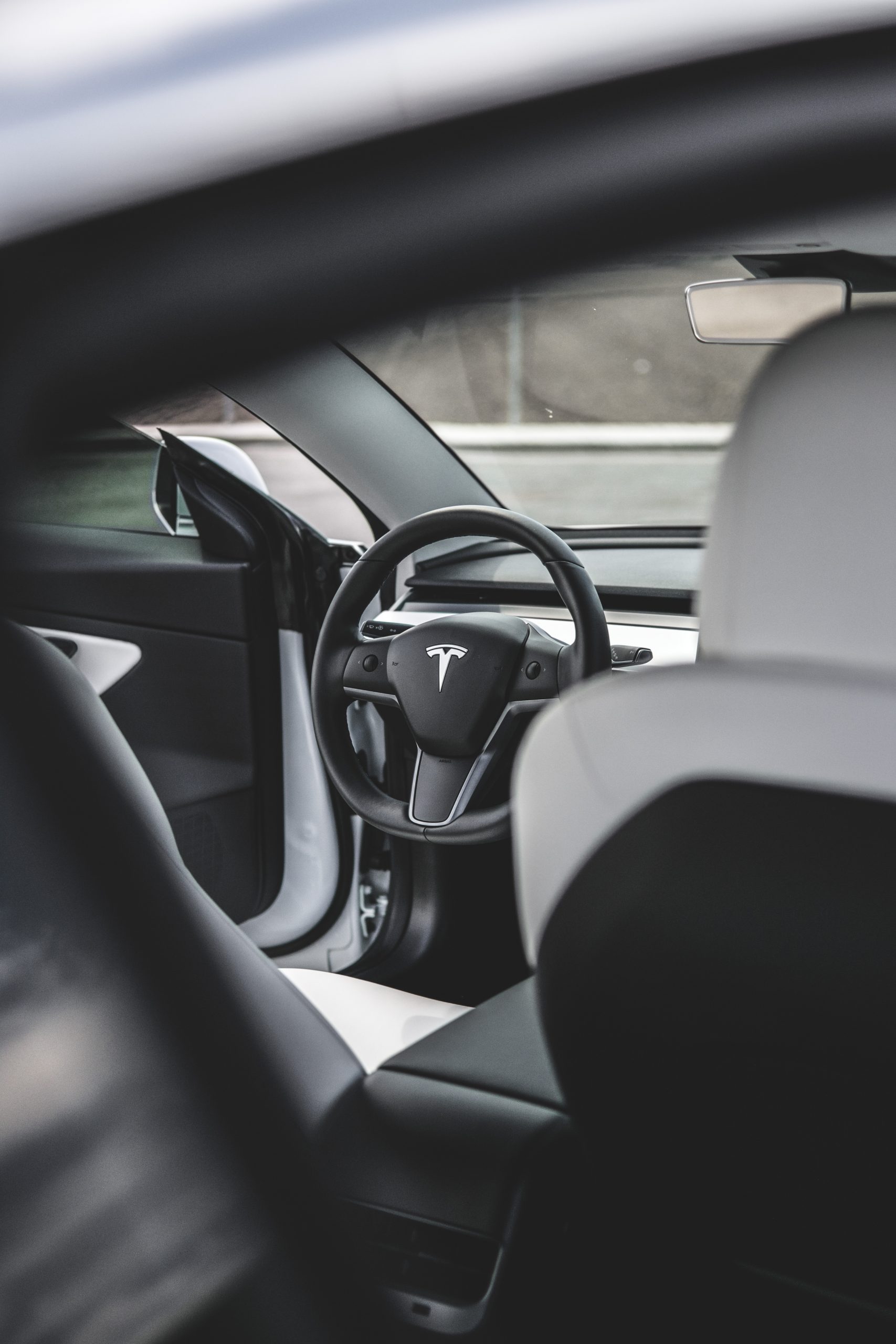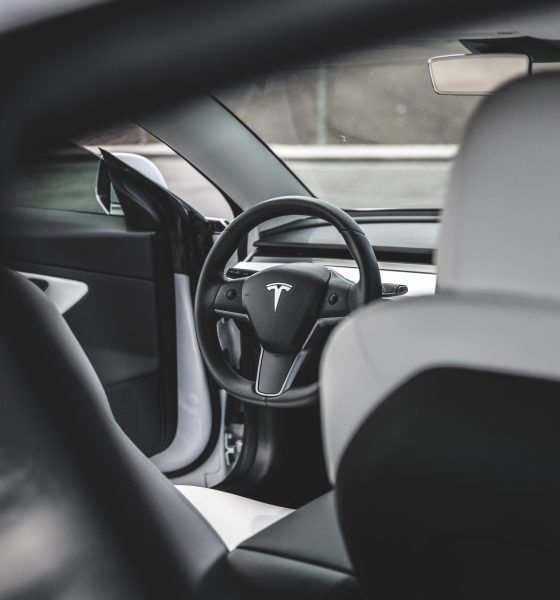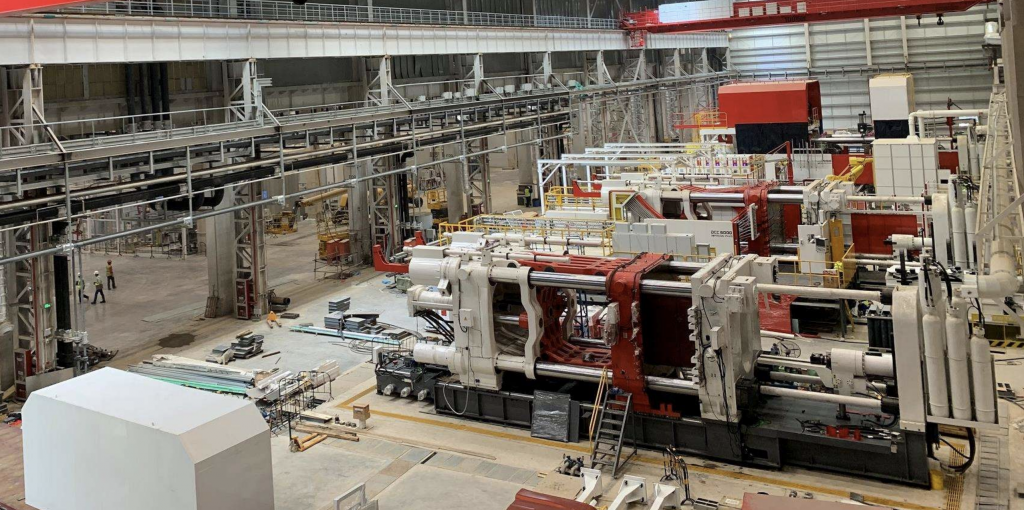

Investor's Corner
Tesla bull Jim Cramer tells the hard truth about why Wall St is missing the TSLA picture
Tesla’s (NASDAQ:TSLA) third-quarter earnings report proved that Elon Musk’s electric car company has matured into a force of nature that is so resilient, even a literal pandemic couldn’t bring it down. As of Thursday’s close, Tesla stock is up over 400%, a testament to the company’s capability to prove its critics wrong at every turn. Yet even amidst these results, Tesla still has a good number of skeptics on Wall St, many of whom are still unable to wrap their heads around the company and its performance.
For Tesla bear-turned-bull Jim Cramer of CNBC’s Mad Money, the company’s current state is a matter of its products and Elon Musk. During the Q3 earnings call, Cramer noted that Musk was extremely restrained. There was no hyperbole, no eccentricity, no drama — Musk was just a CEO who was reporting on Tesla’s best quarter yet, and he was simply a leader who still believes that the best is yet to come. The Mad Money host further mentioned that Elon Musk almost sounded humble and gracious as he thanked his employees, suppliers, and investors for helping Tesla achieve its remarkable milestones.
With Tesla having a valuation that is far above some of its competitors combined, auto analysts and critics are having a very difficult time justifying the company’s market cap as an automaker today. Cramer argues that critics are missing the big picture, as Tesla has already transcended the auto industry. Just as explained by the company’s bulls, Tesla is more of a tech company now than it is an automaker. And when compared to other companies in the tech sector, Tesla’s $397 billion market cap makes sense. This is especially true considering that Tesla’s products sell themselves, and Elon Musk is a visionary whose brilliance lies in tangible innovation.

“At this point, Tesla has transcended the auto industry. It is a tech company. It’s figured out how to store clean energy and then use it to fuel cars and who knows what else. Most automakers have to spend more money advertising than Tesla spends on building new factories. They blanket the airwaves with ads that no one wants to see, not even the ones voiced by the great John Slattery. Tesla, on the other hand, doesn’t need to advertise.”
“They failed to understand the scale of the opportunity that Tesla held out to individual investors like you, including the younger ones, we call them the Robinhood kind, who’ve taken the market by storm. These analysts did not grasp the younger generation’s more optimistic ethos. To them, Musk is a rebel with a cause — the cause of observable excellence. Not social media mystique or cloud brilliance, but actual metal-bent-around brilliance,” Cramer said.
But even more importantly, the Mad Money host explained that for many retail investors today, Tesla is something far more than a simple venture to put money in. Over the years, and as it battled its way to the top, Tesla and its clean energy vehicles have essentially become symbols of hope and optimism. Tesla is a story of American ingenuity, and as it continues to reach new heights, it is becoming proof that even the everyman investor could make a lot of money if he or she supports a company with a revolutionary product and a CEO who is willing to put it all on the line.
“The analysts couldn’t understand that Tesla’s more than just a vehicle. It’s a vehicle of hope in a miasma of gloom. Musk even made it easier for individual investors to get in by splitting the stock. Now it’s not a cult stock like I once thought. That was wrong. It’s a story of American ingenuity, probably a lot like Henry Ford when he first burst on the scene with his universal car. Except with a much cleaner engine and without Henry Ford’s trademark anti-semitism.
“Here’s the bottom line. When it comes to Tesla, the doubters were wrong and the believers were right. Those believers are not the rich, cautious state preachers of index fund handcuffs. They’re the individual investors who are sick and tired of being told that they’re stupid, too stupid to manage their own money. Turns out they can make a lot of money when you buy stock at a great company with a visionary CEO and a revolutionary product. That shouldn’t take so many people by surprise, and I hope it doesn’t after this shimmering star that is Elon Musk’s Tesla,” Cramer declared.
Watch Jim Cramer’s recent Mad Money segment in the video below.

Investor's Corner
Tesla stock closes at all-time high on heels of Robotaxi progress

Tesla stock (NASDAQ: TSLA) closed at an all-time high on Tuesday, jumping over 3 percent during the day and finishing at $489.88.
The price beats the previous record close, which was $479.86.
Shares have had a crazy year, dipping more than 40 percent from the start of the year. The stock then started to recover once again around late April, when its price started to climb back up from the low $200 level.
This week, Tesla started to climb toward its highest levels ever, as it was revealed on Sunday that the company was testing driverless Robotaxis in Austin. The spike in value pushed the company’s valuation to $1.63 trillion.
Tesla Robotaxi goes driverless as Musk confirms Safety Monitor removal testing
It is the seventh-most valuable company on the market currently, trailing Nvidia, Apple, Alphabet (Google), Microsoft, Amazon, and Meta.
Shares closed up $14.57 today, up over 3 percent.
The stock has gone through a lot this year, as previously mentioned. Shares tumbled in Q1 due to CEO Elon Musk’s involvement with the Department of Government Efficiency (DOGE), which pulled his attention away from his companies and left a major overhang on their valuations.
However, things started to rebound halfway through the year, and as the government started to phase out the $7,500 tax credit, demand spiked as consumers tried to take advantage of it.
Q3 deliveries were the highest in company history, and Tesla responded to the loss of the tax credit with the launch of the Model 3 and Model Y Standard.
Additionally, analysts have announced high expectations this week for the company on Wall Street as Robotaxi continues to be the focus. With autonomy within Tesla’s sights, things are moving in the direction of Robotaxi being a major catalyst for growth on the Street in the coming year.
Elon Musk
Tesla needs to come through on this one Robotaxi metric, analyst says
“We think the key focus from here will be how fast Tesla can scale driverless operations (including if Tesla’s approach to software/hardware allows it to scale significantly faster than competitors, as the company has argued), and on profitability.”

Tesla needs to come through on this one Robotaxi metric, Mark Delaney of Goldman Sachs says.
Tesla is in the process of rolling out its Robotaxi platform to areas outside of Austin and the California Bay Area. It has plans to launch in five additional cities, including Houston, Dallas, Miami, Las Vegas, and Phoenix.
However, the company’s expansion is not what the focus needs to be, according to Delaney. It’s the speed of deployment.
The analyst said:
“We think the key focus from here will be how fast Tesla can scale driverless operations (including if Tesla’s approach to software/hardware allows it to scale significantly faster than competitors, as the company has argued), and on profitability.”
Profitability will come as the Robotaxi fleet expands. Making that money will be dependent on when Tesla can initiate rides in more areas, giving more customers access to the program.
There are some additional things that the company needs to make happen ahead of the major Robotaxi expansion, one of those things is launching driverless rides in Austin, the first city in which it launched the program.
This week, Tesla started testing driverless Robotaxi rides in Austin, as two different Model Y units were spotted with no occupants, a huge step in the company’s plans for the ride-sharing platform.
Tesla Robotaxi goes driverless as Musk confirms Safety Monitor removal testing
CEO Elon Musk has been hoping to remove Safety Monitors from Robotaxis in Austin for several months, first mentioning the plan to have them out by the end of 2025 in September. He confirmed on Sunday that Tesla had officially removed vehicle occupants and started testing truly unsupervised rides.
Although Safety Monitors in Austin have been sitting in the passenger’s seat, they have still had the ability to override things in case of an emergency. After all, the ultimate goal was safety and avoiding any accidents or injuries.
Goldman Sachs reiterated its ‘Neutral’ rating and its $400 price target. Delaney said, “Tesla is making progress with its autonomous technology,” and recent developments make it evident that this is true.
Investor's Corner
Tesla gets bold Robotaxi prediction from Wall Street firm
Last week, Andrew Percoco took over Tesla analysis for Morgan Stanley from Adam Jonas, who covered the stock for years. Percoco seems to be less optimistic and bullish on Tesla shares, while still being fair and balanced in his analysis.

Tesla (NASDAQ: TSLA) received a bold Robotaxi prediction from Morgan Stanley, which anticipates a dramatic increase in the size of the company’s autonomous ride-hailing suite in the coming years.
Last week, Andrew Percoco took over Tesla analysis for Morgan Stanley from Adam Jonas, who covered the stock for years. Percoco seems to be less optimistic and bullish on Tesla shares, while still being fair and balanced in his analysis.
Percoco dug into the Robotaxi fleet and its expansion in the coming years in his latest note, released on Tuesday. The firm expects Tesla to increase the Robotaxi fleet size to 1,000 vehicles in 2026. However, that’s small-scale compared to what they expect from Tesla in a decade.
Tesla expands Robotaxi app access once again, this time on a global scale
By 2035, Morgan Stanley believes there will be one million Robotaxis on the road across multiple cities, a major jump and a considerable fleet size. We assume this means the fleet of vehicles Tesla will operate internally, and not including passenger-owned vehicles that could be added through software updates.
He also listed three specific catalysts that investors should pay attention to, as these will represent the company being on track to achieve its Robotaxi dreams:
- Opening Robotaxi to the public without a Safety Monitor. Timing is unclear, but it appears that Tesla is getting closer by the day.
- Improvement in safety metrics without the Safety Monitor. Tesla’s ability to improve its safety metrics as it scales miles driven without the Safety Monitor is imperative as it looks to scale in new states and cities in 2026.
- Cybercab start of production, targeted for April 2026. Tesla’s Cybercab is a purpose-built vehicle (no steering wheel or pedals, only two seats) that is expected to be produced through its state-of-the-art unboxed manufacturing process, offering further cost reductions and thus accelerating adoption over time.
Robotaxi stands to be one of Tesla’s most significant revenue contributors, especially as the company plans to continue expanding its ride-hailing service across the world in the coming years.
Its current deployment strategy is controlled and conservative to avoid any drastic and potentially program-ruining incidents.
So far, the program, which is active in Austin and the California Bay Area, has been widely successful.








